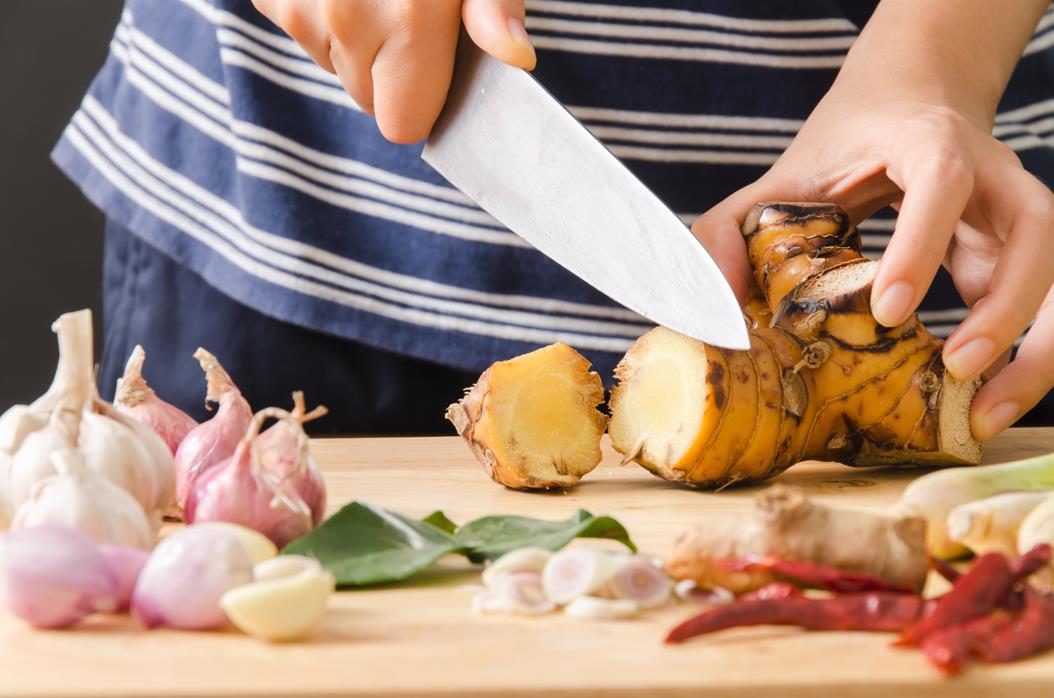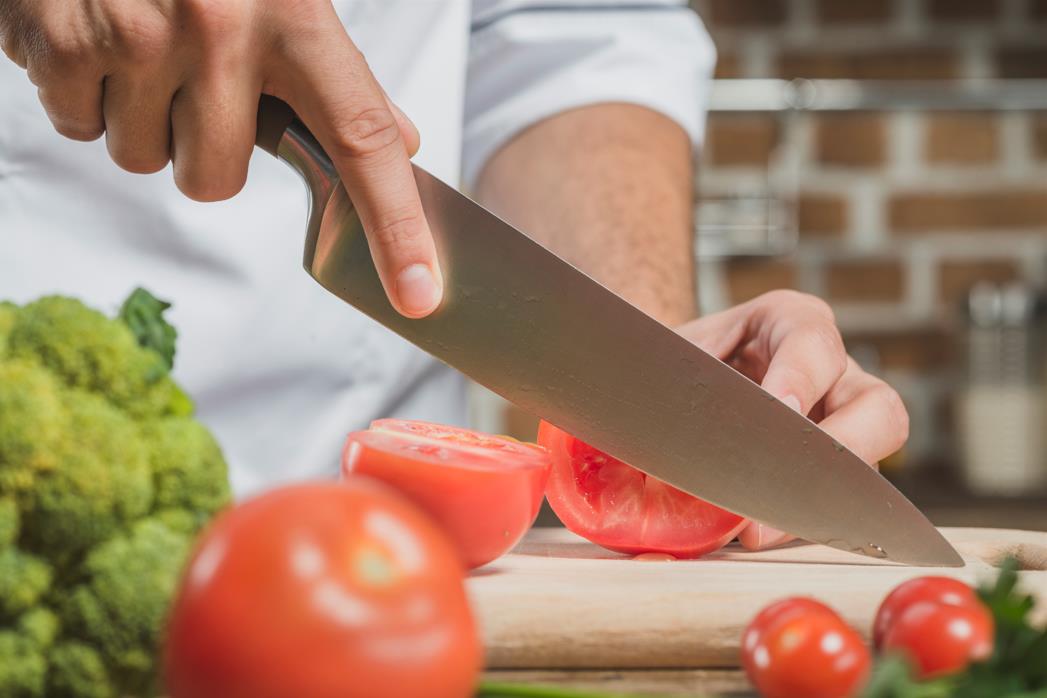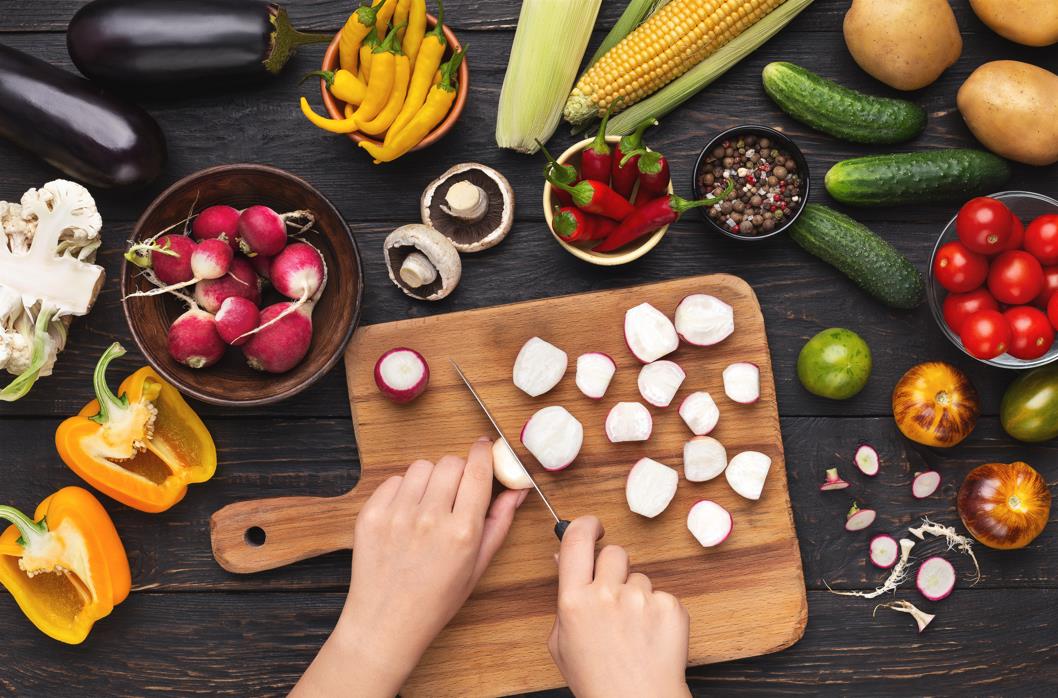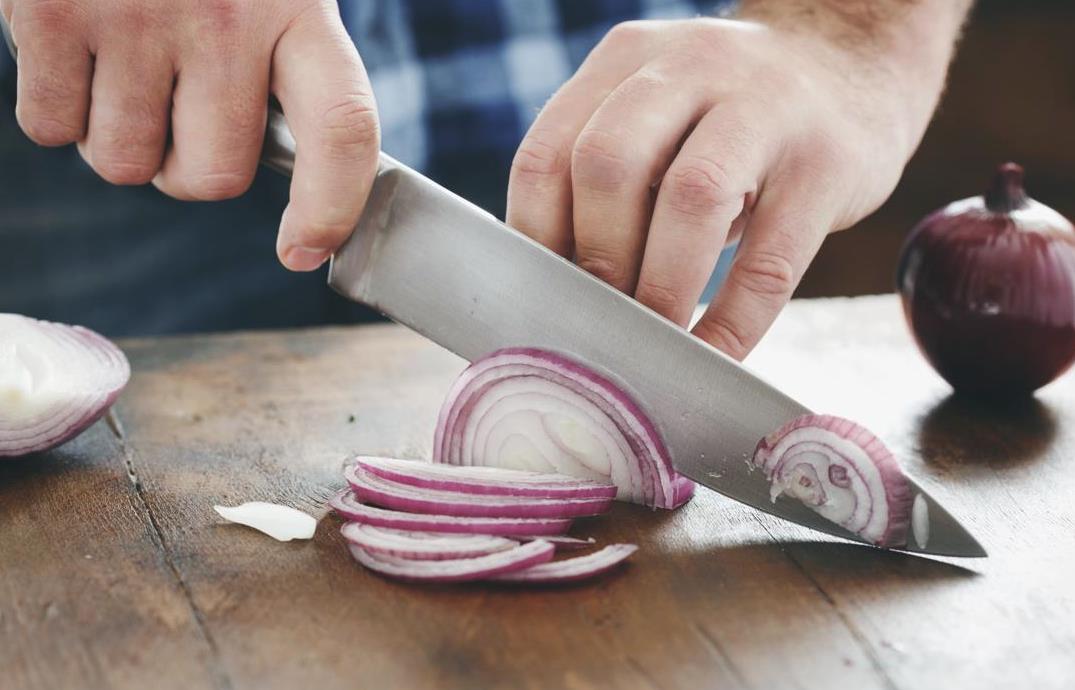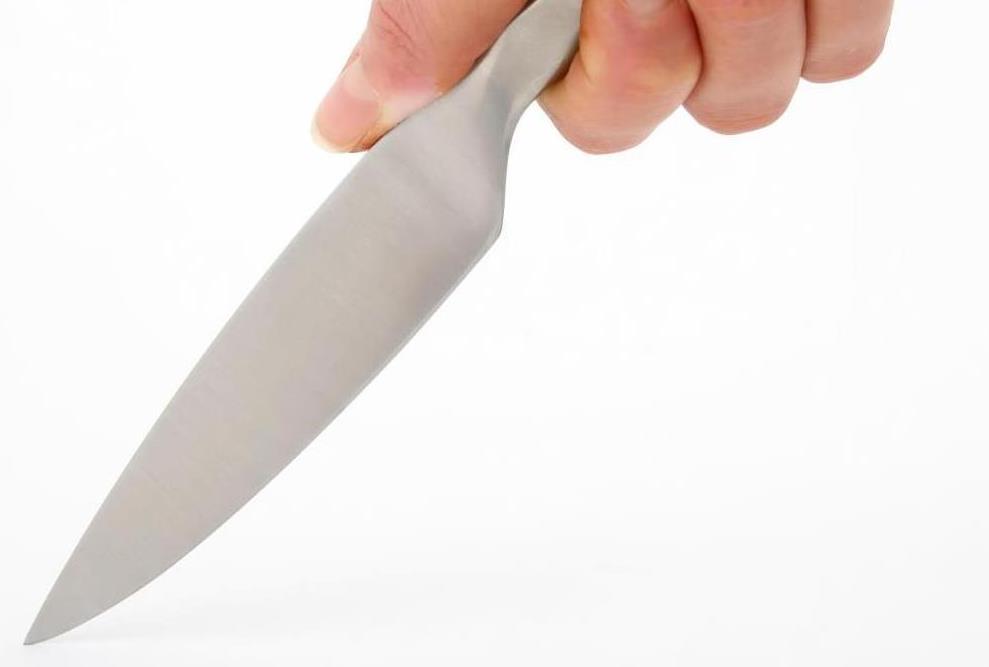A good chef’s knife can be the difference between struggling to cut through ingredients and effortlessly slicing them into even pieces. When choosing a chef’s knife, the size is as important as everything else. While some cooks say the knife is just as sharp as it is heavy, most chefs will tell you that a good knife must be of proper size, weight, and balance.
Most chef knives measure 6—14 inches; however, there is no “one size fits all.” Ideally, the perfect chef knife size will depend on the size of your hands. A knife handle must be able to sit firmly in between your thumb and index finger. If it’s too big, you won’t be able to achieve the proper grip; if it’s too small, your hand will cramp after prolonged use.
As you read on, you will understand why size matters, how to choose the perfect size, and the ideal weight for your chef knife.
Table of contents
Why does a chef knife’s size matter?
Professional chefs and home cooks alike agree: a chef knife’s size is vital to its performance and ease of use. A knife’s size will affect how you cut, slice, and dice vegetables and meat. These tasks require a specific “feel” to achieve the best results.
The size and weight of your chef knife will affect how you hold it, whether with one hand or two. These factors influence the maneuverability of your hand and the amount of pressure you can apply during use.
The size of the blade will determine the thickness, length, and width of slices. It will also affect how fast you cut through ingredients. A larger knife can make deeper cuts, while a smaller one may be more precise.
Notably, a larger knife is easier to handle, while a smaller one can be more accurate. It’s also important that you consider the intended use. For example, a smaller blade is best suited for dicing and chopping fruits, vegetables, and boneless meat. A larger blade is best for cutting through thick bones or tough flesh.
Handpicked for you
True cutting power in the palm of your hand
Chef knife length
The two most essential parts of a kitchen knife that make up the entire length are the blade and handle. While the size of a chef knife can vary, the standard length is 6—14 inches long. The proper measure of the length of a chef’s knife starts from the pointed tip to the base of the handle.
Blade length
Blade length is the measure of the distance between the blade’s tip to where it meets with the handle. The blade is a vital aspect of a chef knife because it determines cuts’ sharpness, width, and thickness.
Blade length affects your ability to cut through specific ingredients. For example, a large blade can make deeper cuts while a smaller one may be more precise. A long blade can slice thicker items, while a shorter blade can make shallow cuts.
6 inch vs. 8 inch vs. 10 inch
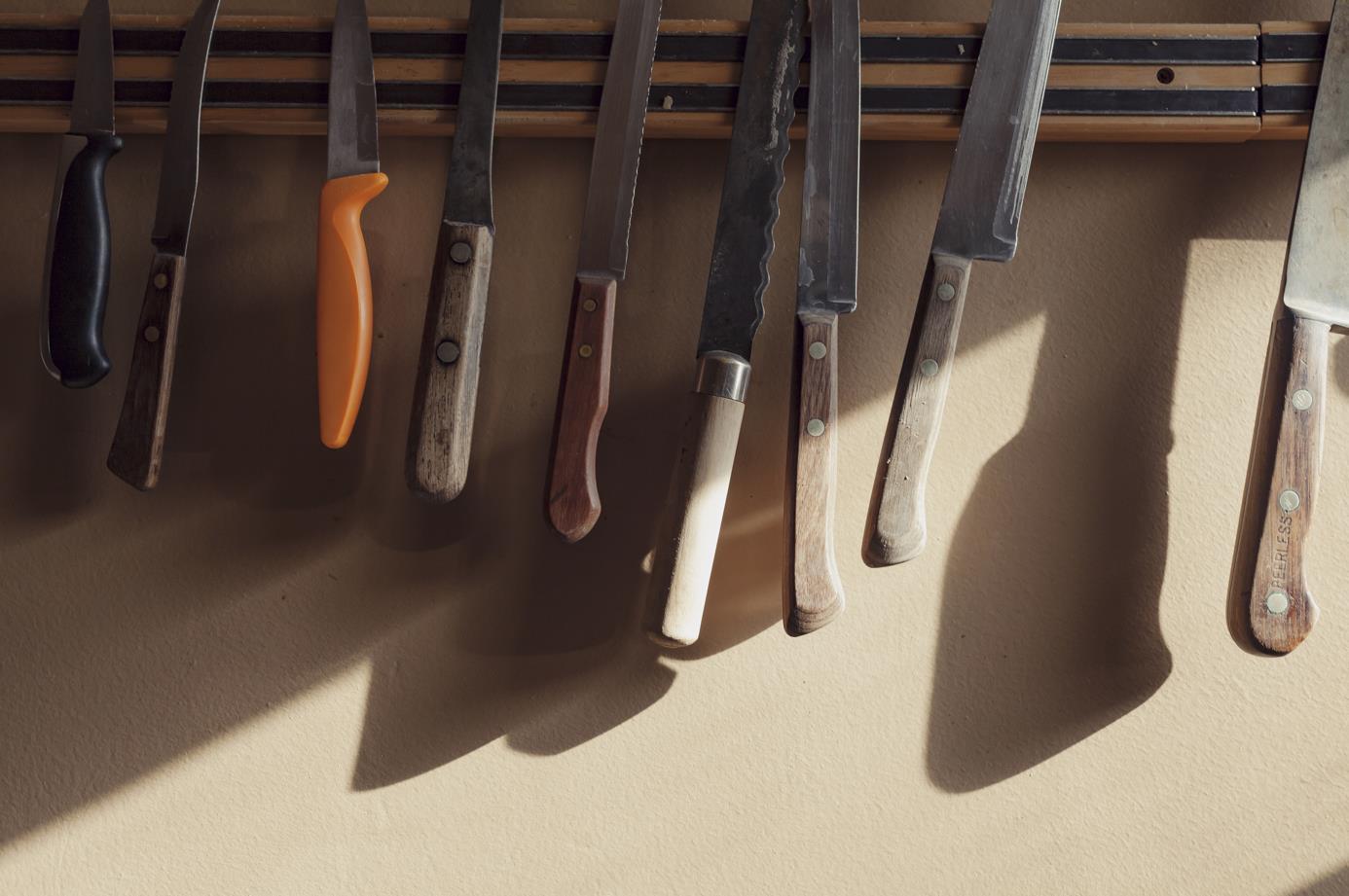
There are different sizes of chef knives available. The most popular among Western chefs are 6 inches, 8 inches, and 10 inches long. This measure is usually that of the blade and not the knife’s overall length.
6-inch chef knife
A 6-inch chef knife is best for precise dicing and fine chopping. This size is recommended for professional chefs with smaller hands or those getting started in the kitchen. It’s also suitable for home cooks who don’t need to cut through large chunks of meat, bone, or gristle.
They are more agile and nimble. As a result, they’re easier to control and manage. Their superior maneuverability allows you to work in smaller and tighter spaces. Furthermore, their small size reduces hand fatigue associated with larger knives.
While you can use these knives to make large cuts, you’ll need several swipes to do so. This may not be ideal for tough vegetables and meat. As such, 8-inch or 10-inch blades are better suited to handle these kinds of ingredients.
8-inch chef knife
An 8-inch chef’s knife is a mid-range size. It’s ideal for cutting through medium-sized fruits, vegetables, and meats. It’s not too long nor too short, providing you with the perfect balance of maneuverability and control.
This knife is a little heavier than the 6-inch knife. As a result, it requires greater effort to use. However, it’s large enough to cut through thick ingredients with fewer swipes.
The 8-inch knife is big enough for those with shorter hands to find it manageable while also providing a comfortable grip for taller chefs. Chef’s of average height and medium-sized hands will find the 8-inch knife a good fit.
10-inch chef knife
A 10-inch chef’s knife is the best for tackling the toughest ingredients. It is heavier than 8-inch and 6-inch chef knives, which means you need a stronger wrist. This type of knife is ideal for restaurant chefs and those with larger hands. While it is suitable for home use, it can be somewhat uncomfortable due to its sheer size.
The blade length is perfect for cutting through large fruits such as watermelons and butter squash without much difficulty. It’s also capable of cutting a high volume of vegetables and meat. However, it may feel too large and heavy on chefs with small or average-sized hands.
Handle length
The handle length is a major consideration for professional chefs and home cooks. It affects a chef’s comfort, efficiency, and precision. Most manufacturers design knife handles measuring 4—5 inches from the knife’s blade. Some also provide longer ones measuring up to 6 inches.
When looking for the perfect handle length, consider the height and size of your hands. Generally, chefs with larger hands can use longer handles, while those with small or average-sized hands do better with standard-sized ones. As with the blade lengths, there’s no one size fits all.
Short vs. long knife
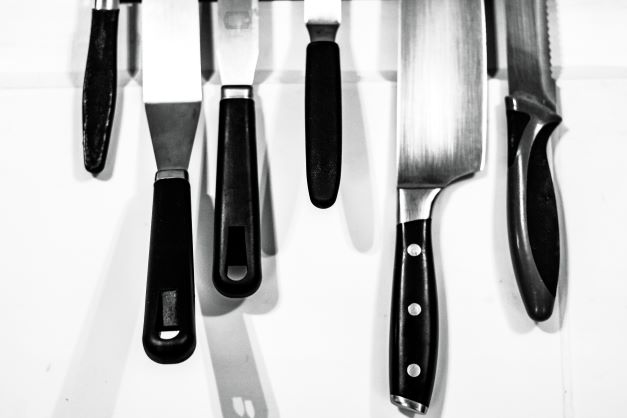
We can categorize the size of a knife as either short or long. Describing a knife as either short or long depends on the overall length of the blade. However, remember that these terms are relative. The knife doesn’t need to be too short or too long; it must simply suit your preference and specific needs.
Short knife
Short knives are known for their small size and lightweight design. They measure between 6—8 inches long. These knives are easier to maneuver and control. Their shorter length allows you to make more accurate cuts with less energy.
It’s easy to chop, slice, and dice with a short knife. The small size allows you to work in tight spaces, like small bowls or pots. You can use a short knife to slice through boneless meats and vegetables without much difficulty.
Short knives are best for beginners or users with smaller hands. They’re easier to store and handle and less intimidating than larger knives. However, The size doesn’t allow you to cut through large chunks of meat, bone, or gristle.
Long knife
Long chef’s knife measures between 8—14 inches long. Long knives are best for people with experience and established comfort levels in the kitchen. Their larger blades offer more versatility, allowing you to handle tougher vegetables, meat, and fish products.
Long knives are best for chefs with larger hands, more strength, and a greater sense of control. While they require more effort to use, they allow you to make profound and more precise cuts. They are perfect for dicing and cutting vegetables and chopping up large pieces of meat or bone.
The size of the chef knife you choose greatly influences your cutting techniques and the efficiency with which you can prepare ingredients.
Large cuts technique
When handling large kitchen knives with a length of the blade typically over 8 inches, you are equipped to make large cuts. This size is optimal for breaking down large pieces of meat or swiftly cutting through tough root vegetables. With a larger knife, it’s crucial to maintain a firm grip and use a rocking motion to slice through the ingredient using the blade’s length.
- Grip: Hold the handle firm with your dominant hand.
- Guidance: Rest the fingers of your non-dominant hand atop the blade for stability.
- Motion: Start with the knife tip down, then press and push forward with a smooth rocking motion.
Precision Cutting
In contrast, smaller knives, which range from 6 to 8 inches with thinner blade, afford more control for tasks that require accuracy, like mincing herbs or creating fine julienne.
- Technique: Use the point for detail work and the edge for swift, sharp cuts.
- Control: Position your non-dominant hand in a claw shape, curling fingertips away from the blade, to guide the knife and protect your fingers.
- Action: Implement a swift, downward chopping motion for precise, clean cuts.
Chef knife weight
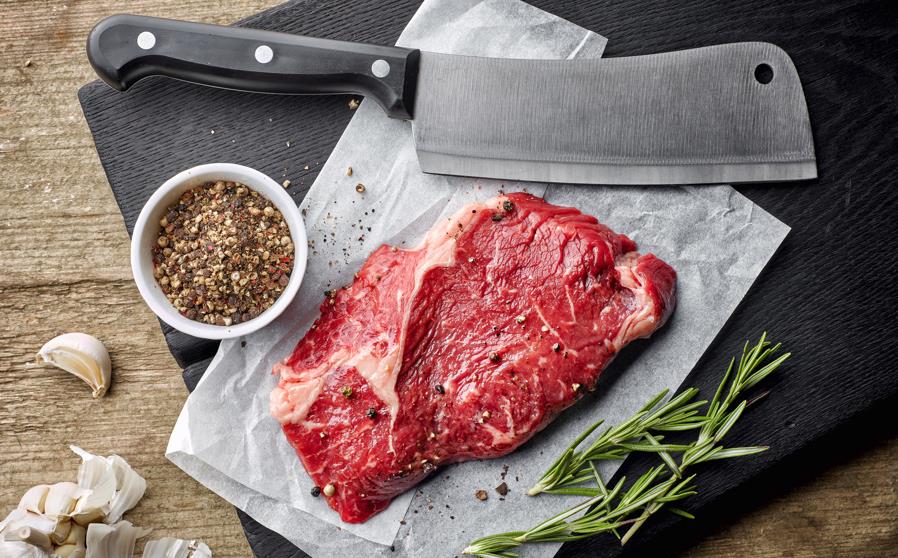
Weight is another important factor when choosing a knife. It determines the effort required for cutting through ingredients, as well as how much pressure you need to exert on your hand.
The weight for a standard 8-inch chef knife measures between 6.6—12.2 ounces. Factors that affect the weight of a chef knife include the material it’s made of.
Carbon steel blades are usually lighter than stainless steel ones of the same size. Different brands have different weights for knives of the same length. However, a rule of thumb is that the knife’s weight should be directly proportional to the blade length.
How does knife weight affect balance?
A well-balanced knife has an even weight distribution from the tip to the handle. It should feel perfectly balanced in your hand without one part of the knife feeling heavier than another. However, there’s no gold standard for a well-balanced knife.
Here is a kicker, though, most Western knife styles are designed to focus on the handle, which is often heavier than the blade. As such, the balance point will often center at the butt of the blade, which leads to better control.
Weight affects the balance such that the more the weight at the tip, the less control you have. Such knives are also less stable and may wobble when you cut through thick ingredients. Your hands will develop pressure points on the wrist if more weight is towards the knife’s handle.
What does this mean? If you choose a well-balanced knife, it will be easy to maneuver. Plus, you’ll hardly feel tired after using it for an extended period. Also, you’ll feel more confident while chopping and slicing through ingredients without putting too much pressure on your wrist and hands.
To tell if your knife balances perfectly, extend your index finger and put it right in the middle of the blade like you would with a teeter-totter. The balance point should be at the butt of the blade, slightly past the bolster.
If the knife tilts towards the blade’s tip, then the blade side is too heavy. Some chefs dealing with large chunks of meat may prefer a tip-heavy knife because it will provide more power through the downward swing.
If the knife tilts towards the handle, then the handle side of the knife is too heavy. A knife with a heavy handle is much less fatiguing to use. It’s also ideal for delicate cuts, such as when chopping through scallions and ginger.
How to choose the best chef knife size for you
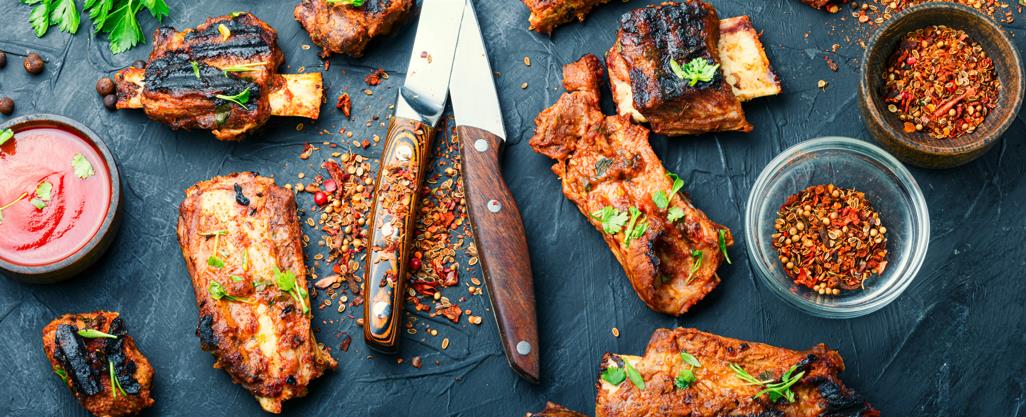
Choosing the best chef knife size for your kitchen is a matter of personal preference and experience. The best thing to do is get several sizes; after all, it’s better to have more than less when you’re cooking.
However, there is a proven method to choose the best size chef knife to work with.
The forearm test for knife length
People come in different sizes and shapes, which is why it’s difficult to come up with one size that fits all knives. That said, there are some general guidelines you can follow when choosing the best-sized knife.
Stretch out your hand so that your upper arm is parallel to the floor and your forearm rests flat on a surface such as a table. Place the knife on your hand such that the tip of the blade rests on the joint of your elbow and the heel on your wrist.
- If your arm is the same length as the blade, it means the knife is a good fit for you.
- If the knife is longer than your forearm, then it’s too big for you and may be difficult to control
- A shorter knife than your forearm is too short, and you may have trouble slicing and chopping.
Best knife size for beginners, for professionals, for value
For beginners, an 8-inch chef knife is a versatile and manageable choice. It’s large enough for most tasks but not unwieldy. If you’re a professional chef looking for precision, a 10-inch knife can provide the extra length needed for larger tasks. When value is a priority, seek a knife that balances quality with cost; an 8-inch or 10-inch knife from a reputable brand often offers the best value.
A table for comparisons with data
| Knife Size (inches) | Use Case | Recommended For | Budget Range |
| 6 | Small tasks, more control | Home cooks, small hands | $20 – $80 |
| 8 | General purpose, versatile | Beginners, home cooks | $30 – $150 |
| 10 | Large tasks, professional settings | Professional chefs | $50 – $200 |
| 12 | Bulk processing, large produce | Experienced users, caterers | $80 – $300 |
Note: Prices vary by brand and material quality. It’s important to test the knife in your hand, if possible, to ensure that the size feels comfortable and the balance suits your cutting style.
Choosing the best chef knife size: FAQs
What is the best/standard size for a chef knife?
The best size for a chef knife is one that feels comfortable in your hand. Most people prefer knives about 8 inches long, but others prefer longer ones. Try several chef knives in stores to see which one fits your hand the best.
How do you measure a chef’s knife?
Knives are measured according to the distance from the blade’s tip to where it meets the handle. To measure a knife, you would need a metric tape or ruler. When measuring, make sure that the blade is flat and that you measure from the very tip of the knife. The handle should be resting on a table or countertop.
Does knife size include handle?
The knife size includes both the handle and the blade. When measuring a knife, you would measure from the very tip of the blade to the end of the handle.
Closing
Choosing the best chef knife size is not as difficult as it seems. As long as you know your personal preferences and what to look out for, finding the best chef knife size is just a matter of trial and error. However, you can use the forearm test to make things easier.Visit our store for high-quality chef knives of your preferred size.







